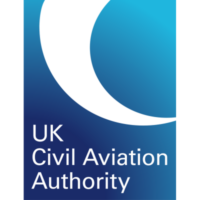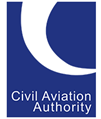Regularly operating unmanned vehicles beyond the visual line of sight (BVLOS) of their operator is a key requirement to maximise the benefits that this technology can deliver.
This new Innovation Hub guide introduces the fundamental principles of operating safely beyond visual line of sight, and describes the challenges that must be tackled in order to unlock the full potential for everyday flying such as inspection of infrastructure and deliveries.
191126_CAP 1861 – BVLOS Fundamentals – UAS Innovation

The UK Civil Aviation Authority has published its first guide aimed at supporting the industry to make unmanned aircraft (drone) flights beyond the visual line of sight of the operator (BVLOS) an everyday occurrence. This would significantly change how unmanned aircraft are used in the UK.
Currently, BVLOS flights require permission from the Civil Aviation Authority and can only occur in specific, restricted cases. Normalizing BVLOS will continue to push the UK forward as a world-leader in aviation innovation and technology.
- Allowing BVLOS operations in the UK could bring huge benefits, including:
- Drone parcel delivery from a distribution centre to a customer
- Long-distance aerial surveys of infrastructure such as power lines or highway construction
- Surveillance at the scene of an accident or incident, operated from an external control centre
- Street mapping a whole city with optical and acoustic sensors
The guide details how future BVLOS operations can be achieved through testing and technology development. They set out the need for the regulator and innovators to build, test, learn and repeat in partnership in small steps to work toward the vision of safe BVLOS operations becoming business as usual in the UK.
David Tait, Acting Head of the UK Civil Aviation Authority’s Innovation Team, said:
“Enabling everyday drone flying beyond visual line of sight is a game changer, providing the opportunity for unmanned vehicles to monitor critical infrastructure, make deliveries and support our daily lives in an efficient and environmentally friendly way.”
“We are now working closely with some of the world’s leading innovators to make these amazing possibilities a reality.”
One company involved in the Civil Aviation Authority’s innovation work is sees.ai, a Techstars-backed startup led by four seasoned founders, formerly with Arup, Apple, CERN, McLaren and hedge funds.
sees.ai is developing technology that will enable drone service operators to fly drone missions BVLOS, from a central control room, at scale. Initial focus is on closed industrial sites, e.g. construction, infrastructure, and oil & gas. Tests are planned with companies such as Skanska, Atkins and the fire service, supported by NATS and Vodafone.
John McKenna, CEO of sees.ai, said: “Under conventional visual line of sight rules, operations have virtually zero economies of scale. In contrast, a centralised BVLOS approach improves on almost every measure with scale – including quality, safety, responsiveness and cost. For end clients, our technology will unlock a service that is better, quicker and cheaper. For operators, our technology will give them a competitive advantage that increases with scale. It’s a very exciting time and we are delighted that the CAA have invited us to explore the future with them.”
This roadmap has been produced by the Civil Aviation Authority’s Innovation Team, initially funded by a Department for Business, Energy and Industrial Strategy (BEIS) grant.
25/11/2019
The CAA





